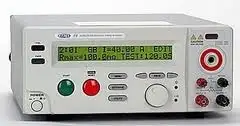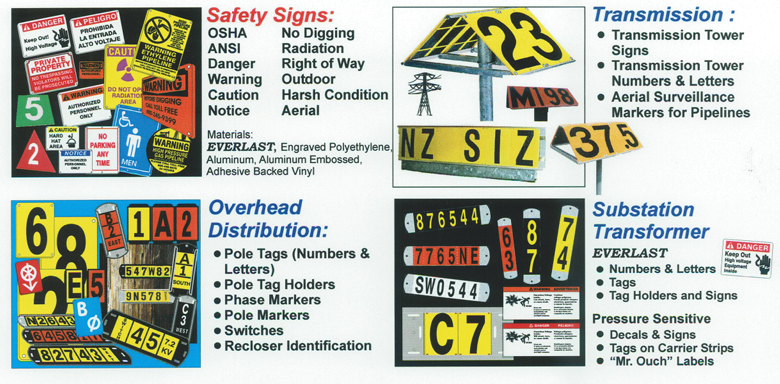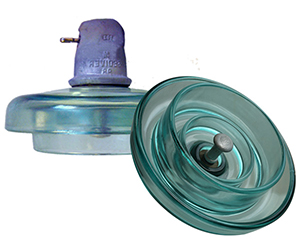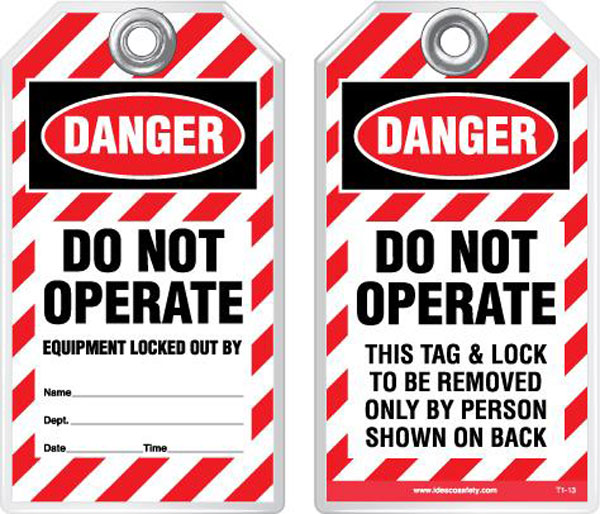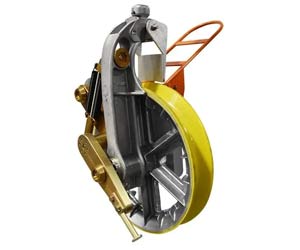What Is A Electrical Relay?
By R.W. Hurst, Editor
Substation Relay Protection Training
Our customized live online or in‑person group training can be delivered to your staff at your location.

- Live Online
- 12 hours Instructor-led
- Group Training Available
Download Our NFPA 70E Fact Sheet – 2024 Electrical Safety Edition

- Understand how NFPA 70E works with NEC and NFPA 70B standards
- Clarify the shared responsibility between employers and employees
- Learn how NFPA 70E supports OSHA compliance
What Is a Electrical Relay? An electromagnetic switch that uses a coil to control contacts, enabling low-voltage control, signal isolation, switching loads, automation, and protection in power circuits across industrial, automotive, and control systems.
What Is a Electrical Relay?
An electrical relay uses a coil to actuate contacts, enabling control, isolation, and safe load switching.
✅ Electromagnetic coil actuates NO/NC contacts
✅ Isolates control circuits from high-power loads
✅ Used in PLCs, automotive, and industrial control
What Is A Electrical Relay?
An electrical relay is a crucial component in electrical engineering, which is important in controlling and protecting electrical circuits. It is classified as a switching device that operates by either opening or closing an electrical circuit. This enables them to control the flow of electrical energy to protect other equipment in the circuit and ensure safe and efficient electrical operation.
A relay, also known as a contactor, is an electronic device that switches electrical signals using an electromagnetic relay, a mechanical switch controlled by a solenoid coil. The relay contacts are essential parts that make or break the circuit connections. It consists of several parts, including a coil of wire, a common terminal, and a closed NC contact.
The working principle of a power relay is simple. When a trigger voltage energizes the coil of wire, it produces a magnetic field that moves the relay contacts. This movement can either open or close the circuit, depending on the design of the relay. Once the trigger voltage is removed, the relay contacts return to their original position. For a step-by-step overview of coil energization, contact motion, and release, see this explanation of how a relay functions for additional context.
Test Your Knowledge About Electrical Protection!
Think you know Electrical Protection? Take our quick, interactive quiz and test your knowledge in minutes.
- Instantly see your results and score
- Identify strengths and areas for improvement
- Challenge yourself on real-world electrical topics
They are vital in protecting electrical circuits from damage caused by overcurrent, short circuits, and other electrical faults. These faults can cause high current flow in the circuit, leading to equipment failure, electrical fires, and other hazards. Protective relays work with different electrical protection equipment to detect and isolate these faults before they cause damage. For foundational definitions and common features, consult this introduction to protective relays for readers new to the topic.
There are several types, including solid-state and electromagnetic relays. Solid-state units use electronic devices to switch electrical signals, while electromagnetic ones use moving parts to open and close circuit connections. For deeper design details and application tradeoffs, see this guide to solid-state relays for practical selection insights.
They can also be categorized based on their contact configuration, such as single pole single throw (SPST), single pole double throw (SPDT), double pole single throw (DPST), and double pole double throw (DPDT). These configurations refer to the number of poles and throws the relay has, determining how many circuits the relay can control.
Industrial electrical protection and control are important in protecting equipment and maintaining safe and efficient operation. They work with other electrical protection equipment to detect faults and isolate affected equipment. For example, protective relays, a type of power relay, are designed to detect specific types of faults, such as overcurrent, undercurrent, overvoltage, undervoltage, and more. For system-level practices, this overview of protective relays discusses coordination, settings, and testing routines.
They require a reliable power supply and control circuit to ensure proper operation. The control circuit provides the necessary signal to activate the relay coil, while the power supply provides the electrical energy to drive the relay coil. Therefore, when designing electrical protection schemes, it is crucial to consider the characteristics of the ones being used and their interaction with other protective devices and equipment. In complex schemes, an auxiliary relay provides extra contacts, seal-in functions, and interlocking to simplify wiring.
They can be further classified into different types based on design and function. For example, the solid-state relay is an electronic device that uses semiconductor components to switch electrical signals. It is a faster and more efficient device than an electromagnetic relay, as it has no moving parts. Conversely, the electromagnetic relay uses a solenoid coil to move the relay contacts and switch the electrical signals. Therefore, it is a more reliable device in harsh environments and is used in applications where the switching speed is not critical.
When selecting an electrical protective device, it is essential to consider the application's voltage and current rating, contact configuration, and type of load being switched. This will ensure the relay operates efficiently and safely within the electrical circuit. It is also important to consider the relay's response time, which is when the relay contacts switch from one position to another. Where intentional pickup or dropout delays are required, a time delay relay helps enforce proper sequencing and coordination.
A power relay is an essential component in industrial electrical protection and control. It operates as a switching device, using either mechanical or electronic means to open and close circuits. Protective devices work with other protective equipment to detect faults and isolate affected equipment. Power relays come in various types, configurations, and designs, and their selection and installation should be made with great care to ensure proper operation and protection of electrical equipment.
One of the crucial factors to consider when working with electrical power relays is circuit protection. Electrical circuits can be protected in various ways, such as using fuses, circuit breakers, or ground fault protection devices. Fuses and circuit breakers protect circuits from overcurrents and short circuits by opening the circuit when the current exceeds a specific threshold. Ground fault protection devices, on the other hand, detect current imbalances between the hot and neutral conductors and open the circuit when a ground fault occurs. For feeders, motors, and generators, an overcurrent relay is coordinated with upstream and downstream devices to achieve selective tripping.
Electricity Today T&D Magazine Subscribe for FREE

- Timely insights from industry experts
- Practical solutions T&D engineers
- Free access to every issue
Another important aspect of the operation is voltage drop. Voltage drop refers to the voltage lost as current flows through a circuit due to the resistance of the conductors. They should be selected based on the voltage drop in the circuit, as this can affect the relay's performance and ability to protect the circuit.
Electromechanical vs Microprocessor-based Electrical Power Relays
Electrical power protective devices have evolved, and there are currently two main types available on the market: electromechanical and microprocessor-based electrical power relays. While both types of relays serve the same purpose of switching electrical signals, they differ significantly in their operation, design, and functionality.
Electromechanical ones are the traditional type that has been used for many years. They use a mechanical switch controlled by a solenoid coil to switch electrical signals. When a current is applied to the solenoid coil, it creates a magnetic field that pulls the contacts together, closing the circuit. When the current is removed, the spring returns the contacts to their original position, opening the circuit. Electromechanical types are relatively simple devices that are reliable and robust. As a result, they are widely used in applications where high reliability and ruggedness are required, such as in power plants, manufacturing facilities, and other industrial settings.
On the other hand, microprocessor-based types are a more recent development in the field. They use digital technology to switch electrical signals and incorporate a microprocessor that provides advanced protection features and functionality. Microprocessor-based units, also known as digital relays, offer several advantages over electromechanical relays.
One of the significant advantages of microprocessor-based relays is their flexibility. They can be programmed to perform multiple functions, making them suitable for a wide range of applications. For example, they can be configured to operate as overcurrent, undercurrent, directional, distance, and many other types. They can also be programmed to provide advanced protection functions like fault location, event recording, and waveform capture.
Another advantage of microprocessor-based ones is their accuracy. These units can provide precise measurements of current, voltage, power, and other electrical parameters, making them ideal for applications where accuracy is critical. They can also provide fast and reliable protection against electrical faults, reducing the risk of equipment damage and downtime.
Microprocessor-based units also offer improved communications capabilities. For example, they can be connected to a network and provide remote monitoring and control, making it easier to manage electrical systems. They can also communicate with other devices, such as protective units, circuit breakers, and SCADA systems, to provide a coordinated electrical protection and control approach.
What are the different types?
There are several types, including electromechanical and microprocessor-based. Electromechanical ones are traditional devices that use a mechanical switch controlled by a solenoid coil. In contrast, microprocessor-based units use digital technology and incorporate a microprocessor that provides advanced protection features and functionality. Within these broad categories are many different types, including overcurrent, undercurrent, directional, distance, and others.
What are the applications?
Electrical power relays are used in a wide range of applications in the electrical industry. They are essential components in industrial electrical protection and control, crucial in protecting equipment and maintaining safe and efficient operation. They are used in power plants, manufacturing facilities, and other industrial settings to protect electrical systems from overcurrents, undercurrents, and other electrical faults. They can also be used in residential and commercial settings to protect circuits from overloading and short circuits.
How do you select one?
Selecting an electrical power relay depends on several factors, including the application voltage and current rating, contact configuration, response time, and voltage drop. The type of load being switched and the fault current rating of the system should also be considered. In addition, it is essential to consider the relay's characteristics, such as its operating temperature range and level of accuracy. Finally, when selecting a relay, it is important to consult the manufacturer's specifications and guidelines to ensure proper electrical circuit operation and protection.
What is the lifespan?
The lifespan of a relay depends on several factors, including the type of relay, the environment in which it operates, and the frequency of use. Electromechanical relays are generally more durable and have a longer lifespan than microprocessor-based relays. The average lifespan of a relay is typically between 10 to 20 years, but this can vary widely depending on the specific application and usage. Regular maintenance and testing can help prolong a relay's life and ensure that it continues to operate efficiently and safely.






